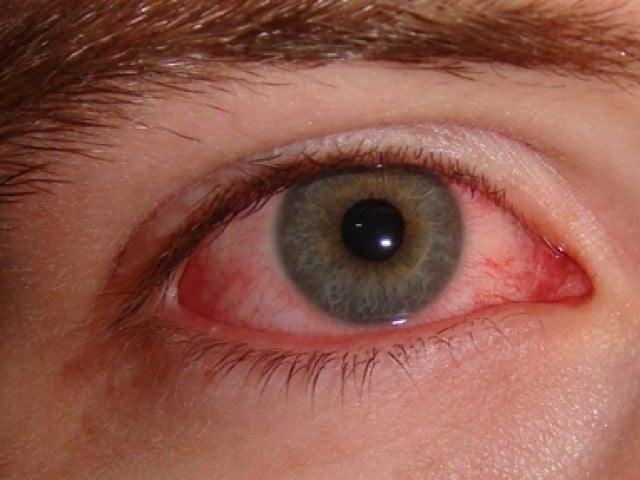
The Sindh Health Department has released an advisory to District Health Officers (DHOs) aimed to prevent the increasing cases of conjunctivitis in Karachi and other urban areas of the province.
Conjunctivitis, also known as pink eye, is on the rise in the city and neighbouring urban regions, according to the Sindh Health Department.
Although no cases of acute viral conjunctivitis have been reported, it is crucial to focus on prevention while remaining vigilant for potential cases due to its high contagious nature.
This pink eye virus can be caused by viral and bacterial infections, or allergies. Bacterial conjunctivitis, which is more common in school-aged children than in adults, is known to occur from December to April.
Symptoms of bacterial conjunctivitis include redness, streaking, swelling, itching, or burning in the the eyes.
Bacterial cases may also involve pus discharge from the eye and increased tearing, leading to the eyelids sticking together.
In some instances, bacterial conjunctivitis may coincide with ear infections.
On the other hand, viral conjunctivitis may manifest alongside symptoms of a cold, flu, or respiratory infection. It typically starts in one eye and can spread to the other within a few days.
It can be accompanied by other allergy symptoms, including an itchy nose, throat, sneezing, and even asthma.
Both viral and bacterial conjunctivitis are highly contagious and easily transmissible. Good hygiene can significantly reduce the risk of infection and its spread. Citizens are urged to wash their hands thoroughly with soap and warm water for at least 20 seconds and use hand sanitizer.
It is crucial to wash hands immediately after administering eye drops to affected individuals.
Published in The Express Tribune, September 3rd, 2023.

1716998435-0/Ryan-Reynolds-Hugh-Jackman-(3)1716998435-0-405x300.webp)














1730706072-0/Copy-of-Untitled-(2)1730706072-0-270x192.webp)
COMMENTS
Comments are moderated and generally will be posted if they are on-topic and not abusive.
For more information, please see our Comments FAQ